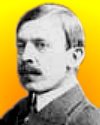
On 28 Jun 1923, Herman M. Biggs died, an American physician who was New York City’s Public Health Officer and pioneered the use of bacteriological studies in the field of public health for the prevention and control of contagious diseases.
In his article, The New Treatment of Diphtheria, in The Century Magazine (1895), he described the value of a dipheria “anti-toxine” for the public treatment of that disease to reduce its death toll. It seemed entirely probable that through the influence of the anti-toxine on the prevention and cure of diphtheria, the disease could eventually be brought completely under control. His pioneering work helped make that possible.

On 28 Jun 1923, Hermann M. Biggs died, the American physician who pioneered the use of bacteriological studies in the field of public health for the prevention and control of contagious diseases. Today's book pick is: Childhood's Deadly Scourge: The Campaign to Control Diphtheria in New York City, 1880-1930, by Evelynn Maxine Hammonds, who describes diphtheria, the highly feared disease in the nineteenth and early twentieth centuries in the United States. In New York City alone, thousands of cases were reported each year, with large numbers of deaths. Physicians and public health experts viewed diphtheria as one of the most difficult to treat and control of all childhood diseases. Due to work to which Biggs was an early contributor, by 1930, the successful immunization of thousands of preschool- and school-aged children made evident for the first time the promise and force of the laboratory in infectious disease control.
It is available from Amazon, typically about New from $26.32. Used from $24.91. (As of earlier time of writing - subject to change.)
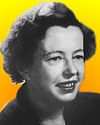 | Mathematics began to seem too much like puzzle solving. Physics is puzzle solving, too, but of puzzles created by nature, not by the mind of man. |
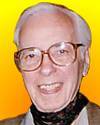 | Man continues to be the only 150 pound nonlinear servomechanism that can be wholly mass-produced by unskilled labor. |
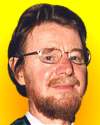 | Long may Louis de Broglie continue to inspire those who suspect that what is proved by impossibility proofs is lack of imagination. |
| Before you look at today's web page, see if you can answer some of these questions about the events that happened on this day. Some of the names are very familiar. Others will likely stump you. Tickle your curiosity with these questions, then check your answers on today's web page. | |
| Births | |
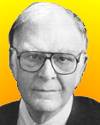 | F. Sherwood Rowland, born 28 Jun 1927, is an American chemist who shared the 1995 Nobel Prize for Chemistry with chemists Mario Molina and Paul Crutzen for research on the depletion of the Earth's ozone layer. What was discovered as a culprit for ozone depletion? |
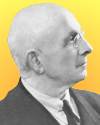 | Alexis Carrel, born 28 Jun 1873, was a French scientist, surgeon, biologist, who received the 1912 Nobel Prize for Physiology or Medicine for developing a method of suturing blood vessels. He also did notable work on the problem of keeping tissue alive after removal from a living organism. The most famous example was a piece of tissue from the heart of a chicken embryo, which was kept for a certain number of years from 1912 until the experiment was deliberately ended. How long was the chicken embryo tissue kept alive? |
| Deaths | |
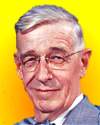 | Vannevar Bush (1890-1974) was an American electrical engineer, who at the age of 35 developed the differential analyzer, (1925) the world's first analog computer. It was capable of solving differential equations. This machine filled a room. What size room was used for this machine? |
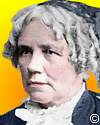 | On 28 Jun 1889, a certain lady died who was the first American professional woman astronomer. While pursuing an amateur interest, on 1 Oct 1847, she gained fame from the observation of a comet which she was first to report. She was also the first female member of the American Association of Arts and Sciences. Can you name this astronomer? |
| Events | |
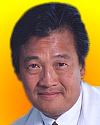 | In 1992, xenotransplant surgery by Dr John Fung and colleagues transplanted an animal’s liver into a 35-year-old man dying from hepatitis B. The operation was conducted at the University of Pittsburgh Medical Center. The patient was the first recipient of an animal liver xenotransplant. He lived ten more weeks, but died from a brain hemorrhage. What kind of animal provided the liver? |
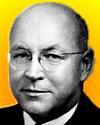 | On 28 Jun of a certain year, the first virus in crystalline form was reported. Professor Wendell Stanley later received a Nobel Prize in Chemistry for his work on the tobacco mosaic virus, which he crystallized. The demonstration of the molecular properties of the virus gave impetus to a new research approach in virology: the study of viruses as large molecules. This was a departure from the predominant view of viruses as infectious agents causing disease. In which decade was the first crystalline form of a virus reported? |
 | On 28 Jun 1958, the world’s longest suspension bridge at that time, was dedicated. It had been open to traffic since the previous November. Fulfilling a 70 year dream, the bridge provided an 8 km (5 mile) link between Michigan’s upper and lower peninsulas, reducing travel time from about 2 hours to just 10 minutes. Which bridge was this? |
Fast answers for the previous newsletter for June 27: the influence exercised by various parts of the embryo that directs the development of groups of cells into particular tissues and organs • the discovery of Neptune • birds • funds in his will for the founding of the Smithsonian Institution • 14 • the decade including the year 1954 • magnesium.
 If you enjoy this newsletter, the website, or wish to offer encouragement or ideas, please send feedback by using your mail reader Reply button.
If you enjoy this newsletter, the website, or wish to offer encouragement or ideas, please send feedback by using your mail reader Reply button. Your click on a Facebook, StumbleUpon, or other social button on the site webpages is also a welcome sign of appreciation. Thank you for using them.
© This newsletter is copyright 2020 by todayinsci.com. Please respect the Webmaster's wishes and do not put copies online of the Newsletter — or any Today in Science History webpage. (If you already have done so, please remove them. Thank you.) Offline use in education is encouraged such as a printout on a bulletin board, or projected for classroom viewing. Online, descriptive links to our pages are welcomed, as these will provide a reader with the most recent revisions, additions and/or corrections of a webpage. For any other copyright questions, please contact the Webmaster by using your mail reader Reply button.
--
If you do not want to receive any more newsletters, Unsubscribe
To update your preferences and to unsubscribe visit this link
Executive Real Estate Business Class
-
"It was like a man with wings. It wasn't like anything you'd see on TV or in a monster movie." ...
About the publisher
Search This Blog
Blog Archive
-
▼
2020
(1542)
-
▼
June
(193)
- TRAVEL: Epic America—Our photographers' picks
- On This Day for June 30 - Night of the Long Knives...
- Newsletter for Tuesday 30 June.
- We told you: Mass-Tracking COVI-PASS Immunity Pass...
- June 30: Theory of Evolution, the Night of Long Kn...
- HISTORY: And the symbols come tumbling down
- Explore the Ocean with Nat Geo Kids Magazine
- New This Week on History News Network
- On This Day for June 29 - London's Globe Theatre d...
- Newsletter for Monday 29 June.
- COVID Cartoon Night (not funny) while we weep for ...
- June 29: Shakespeare's Globe Theatre Burns Down an...
- FAMILY: Getting your kid to help others
- Henry VIII's surprising burial place | The world's...
- On This Day for June 28 - Assassination of Archduk...
- Say the wrong thing: lose visitation with your kid...
- Newsletter for Sunday 28 June.
- June 28: Franz Ferdinand Assassinated, the Treaty ...
- The Compass: Kenya
- How the Invention of A/C Changed US Politics
- On This Day for June 27 - Yen made official moneta...
- Newsletter for Saturday 27 June.
- June 27: 1st Women's Magazine, Nuclear Power Stati...
- CORONAVIRUS SPECIAL EDITION: The virus hasn't won ...
- PHOTOGRAPHY: A legendary photographer's enduring r...
- Partner: How to keep your kids learning vocab this...
- Archaeologists Say They've Just Solved The 400-Yea...
- The Roundup Top Ten From History News Network
- On This Day for June 26 - Opening of CN Tower, Bab...
- Newsletter for Friday 26 June.
- Contact Tracer warns of forced vaccinations plus R...
- June 26: Reconnaissance balloons, Kennedy's Clario...
- YOUR WEEKLY ESCAPE: A dangerous quest for hallucin...
- That Was No Bunny: Watch New Episode of Alone Tonight
- ANIMALS: Leave that elephant alone
- On This Day for June 25 - Korean War begun, Antoni...
- Newsletter for Thursday 25 June.
- June 25: 1st Female PhD, Custer's Last Stand, the ...
- SCIENCE: The heat wave in the Arctic
- Demystified: What Does "SPF" Mean?
- On This Day for June 24 - Russia invaded by Napole...
- Breaking News from History News Network
- Newsletter for Wednesday 24 June.
- June 24: Fatal Medieval Dance Manias, the Gadsden ...
- TRAVEL: Fear of flying and hotel rooms fuels RV boom
- Be at the Front Lines of History's Most Epic Battl...
- On This Day for June 23 - Battle of Bannockburn, C...
- Lowest US coronavirus deaths reported since March ...
- Newsletter for Tuesday 23 June.
- June 23: World's Oldest Parliament, the Contracept...
- Life Under The Shah: What Iran Looked Like Before ...
- HISTORY: A swift goodbye to some racist imagery (a...
- A whole year of Britannica Premium for $49.99?
- New This Week on History News Network
- On This Day for June 22 - Mutiny against Henry Hud...
- Newsletter for Monday 22 June.
- Clintons and Gates Connected at the Hip plus Cardi...
- June 22: Galileo Galilei Recants, Last Shot of the...
- FAMILY: How to keep kids safe as places reopen
- On This Day for June 21 - Japanese defenses destro...
- Newsletter for Sunday 21 June.
- June 21: 1st Governor General of India, Fermat's L...
- The Compass: Ecuador
- On This Day for June 20 - Casket Letters found, Ho...
- Newsletter for Saturday 20 June.
- CORONAVIRUS SPECIAL EDITION: Could public bathroom...
- Mandatory Vaccines coming: Bill Gates Accuses Tho...
- June 20: Attila the Hun, the University of Oxford ...
- PHOTOGRAPHY: Fatherhood 2020 — ‘Fear and courage a...
- Why is America haunted by its past?
- The Woman Who Claimed Emmett Till Wolf-Whistled At...
- This Week's Roundup Top Ten from History News Network
- Exclusive HistoryExtra podcasts | Listen now
- On This Day for June 19 - Rosenbergs executed for ...
- Newsletter for Friday 19 June.
- World Economic Forum starts The Great Reset initia...
- YOUR WEEKLY ESCAPE: How the ultimate shark photo w...
- June 19: London's Metropolitan Police and the 1st ...
- Predator Encounters. Watch New Episode of Alone To...
- ANIMALS: Finding the snow leopards
- Count on a Source You Can Trust
- On This Day for June 18 - War of 1812 begun, Sir P...
- Newsletter for Thursday 18 June.
- Lockdowns, tracing, testing, vaccinating, and Libe...
- June 18: US-British War of 1812, the Battle of Wat...
- SCIENCE: They grew fearsome. They began soft, and ...
- Demystified: How Are Sports Chosen for the Olympics?
- Breaking News from History News Network
- On This Day for June 17 - Arrest of O.J. Simpson, ...
- Newsletter for Wednesday 17 June.
- June 17: Mumtaz Mahal, the French Revolution and G...
- TRAVEL: They hurtled the world's highest point
- Explore together with Nat Geo Kids magazine
- On This Day for June 16 - First woman in space, Jo...
- Newsletter for Tuesday 16 June.
- June 16: Salvation Army Forms, Bloomsday and FDR's...
- HISTORY: Why we can’t shake COVID-19
- New This Week on History News Network
- On This Day for June 15 - Magna Carta sealed by Ki...
- Yes, they really are forcing changes to your world...
-
▼
June
(193)
-
Blogroll
-
About
HistoryFact










0 comments:
Post a Comment